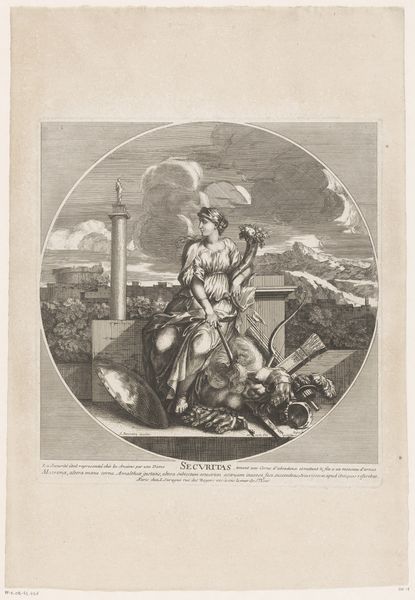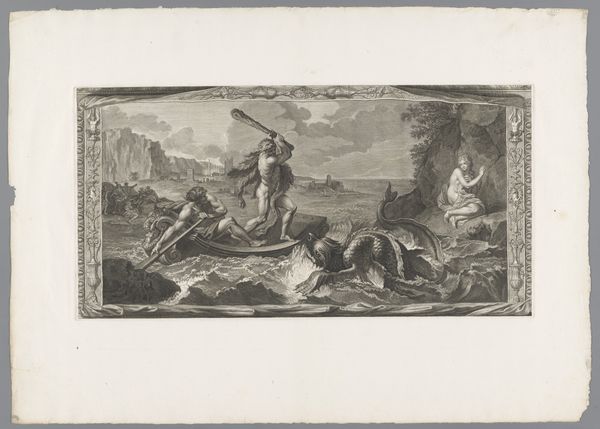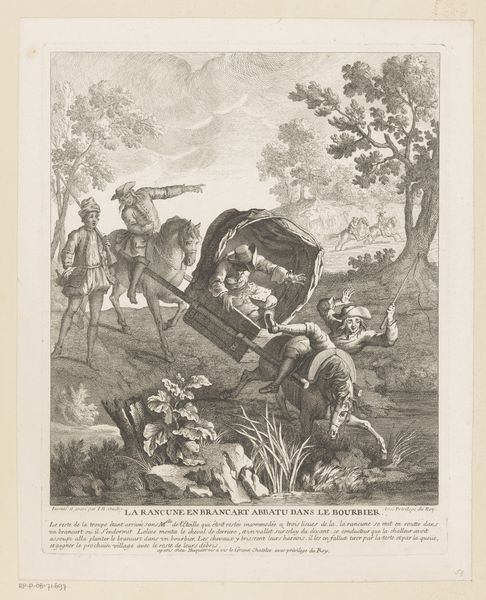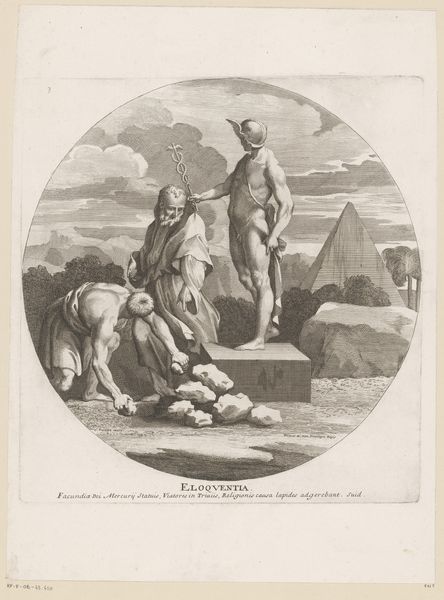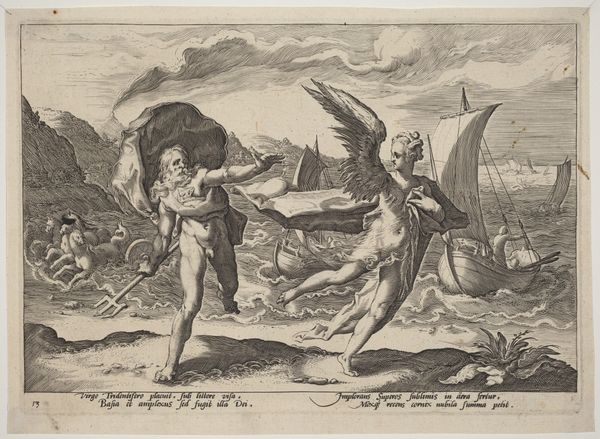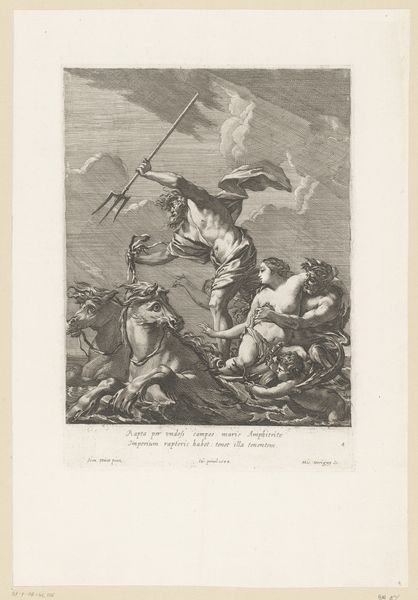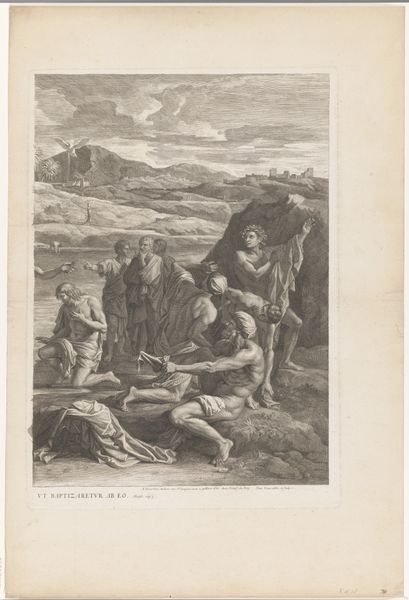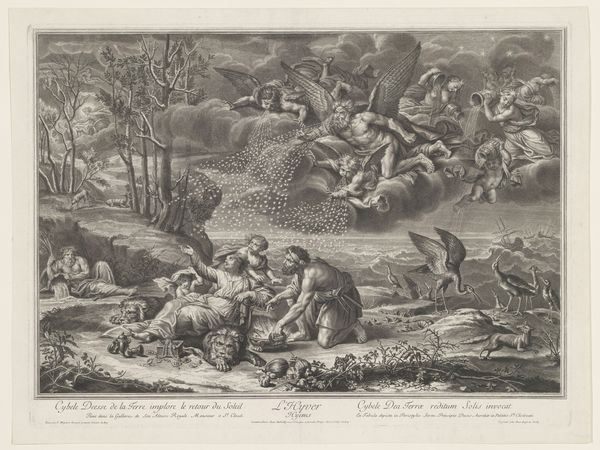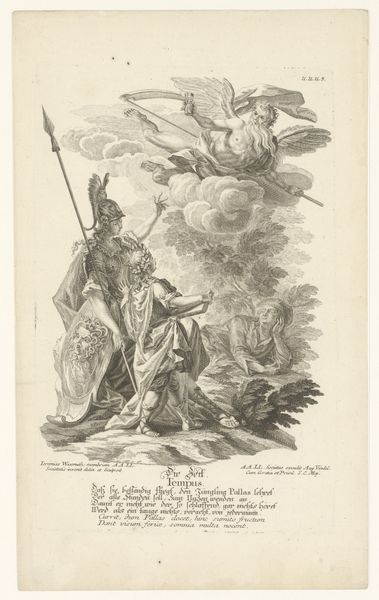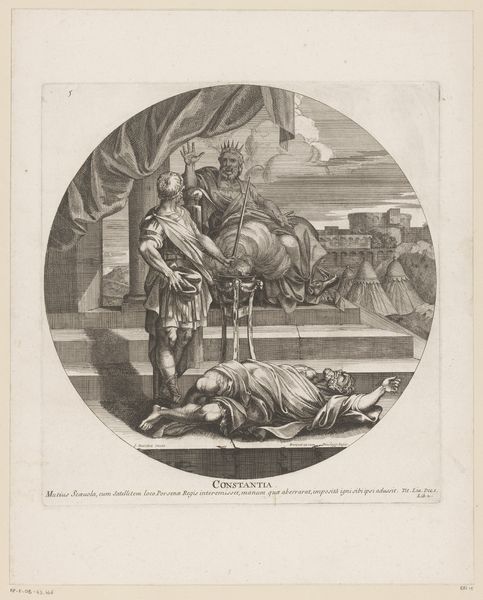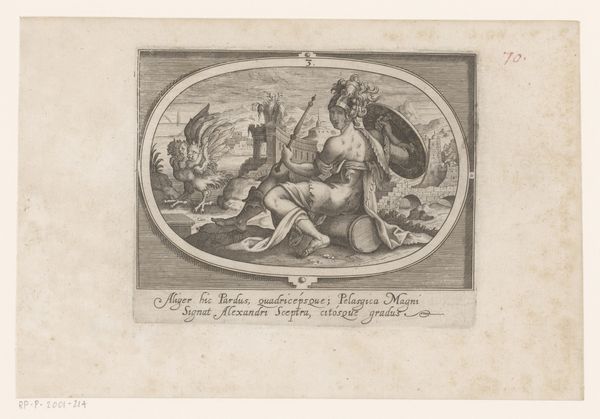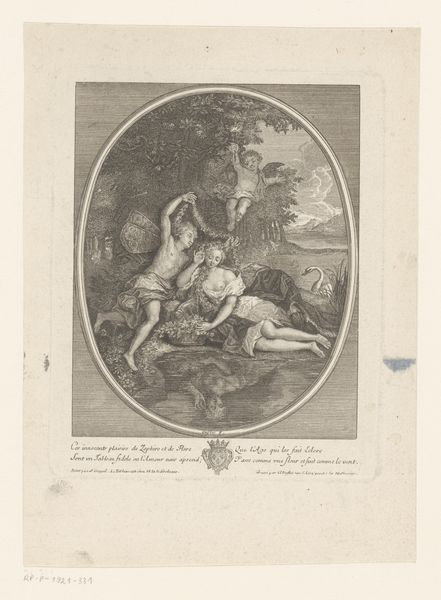
print, engraving
#
aged paper
#
allegory
#
baroque
# print
#
old engraving style
#
landscape
#
figuration
#
line
#
history-painting
#
engraving
Dimensions: height 316 mm, width 295 mm
Copyright: Rijks Museum: Open Domain
Curator: Ah, this engraving! The title is “Muziek,” which is Dutch for "Music." It’s attributed to Jacques-Antoine Friquet de Vauroze, and judging from its style, I'd place its creation somewhere between 1663 and 1716. Editor: Immediately striking. The tonal range is incredible. It’s a study in light and shadow rendered purely through line work. Dramatic! Curator: Indeed. Note the way the artist uses the circular frame— almost like looking through a porthole. It’s a fairly standard Baroque allegory, a visual representation of music. Editor: And that figure riding the dolphin! Is that Arion? The lines defining his form are wonderfully fluid, echoing the curves of the lyre he’s holding. And observe how the dark, stormy sky contrasts with the relatively serene expression on his face. The dynamic lines of the waves carry your eye, too. Curator: Right, the subject refers to the myth of Arion. He was a famed musician whose life was saved by a dolphin, which was charmed by his song and rescued him at sea. In a period that celebrated artistic patronage, works like this flattered those wealthy elites who styled themselves after the educated elite. Editor: What do you think about the ship on the horizon? The scale feels a bit off compared to the dolphin and figure in the foreground. Does it relate to the tonal balance of light and dark? Curator: Its placement and hazy rendering, it really sets the scene. The implication is that Arion was tossed from that very ship, the looming darkness implying treachery or bad luck—rescued only by the power of music itself, as symbolized by the dolphin. The print could circulate classical tales and culture more broadly in a period where literacy was restricted. Editor: A really clever interplay of darkness and light. Despite the relatively static medium, it’s so expressive. It definitely brings to mind music's capacity to both reflect turmoil and bring harmony. Curator: And for audiences of the era, prints such as these were an important medium for circulating artistic ideas and celebrating the enduring influence of classical mythology. Editor: Looking closer, the composition, that balance, makes the artwork more dynamic. Thanks for pointing out its history.
Comments
No comments
Be the first to comment and join the conversation on the ultimate creative platform.
